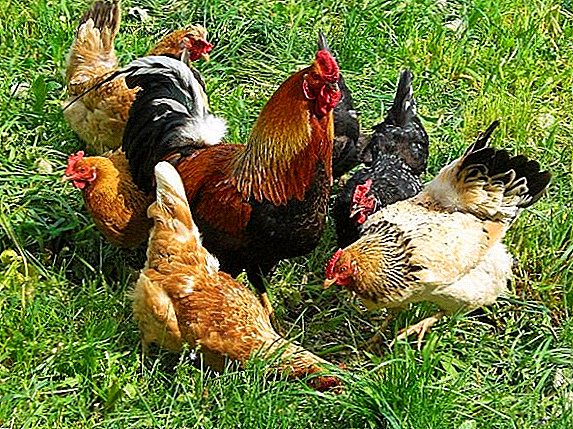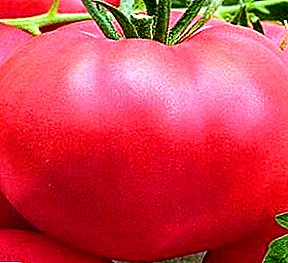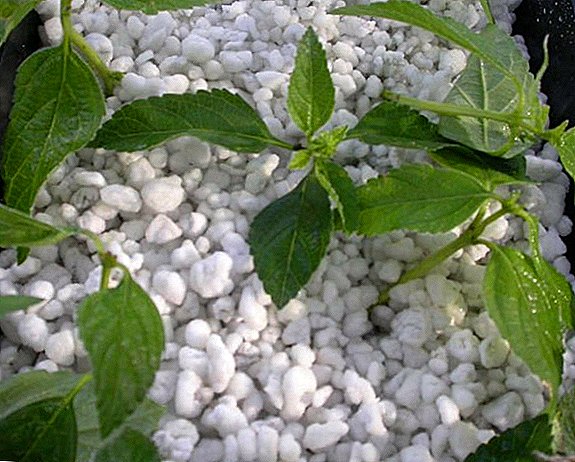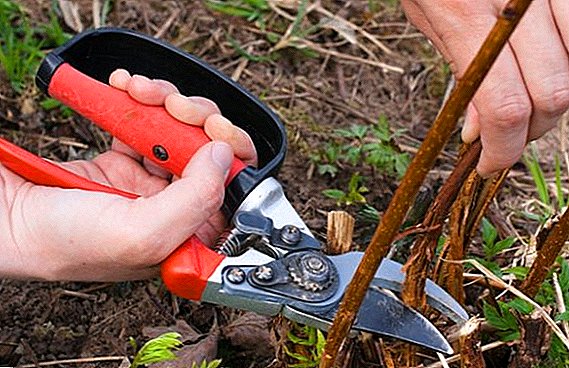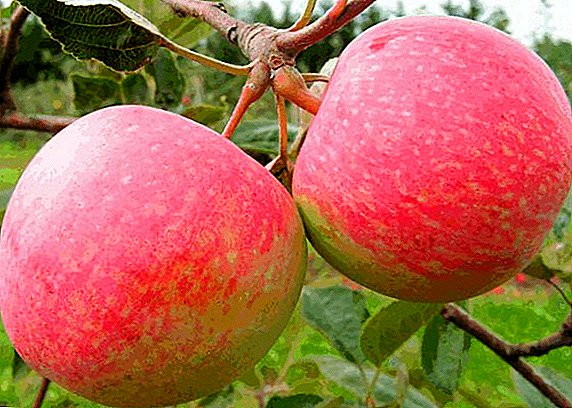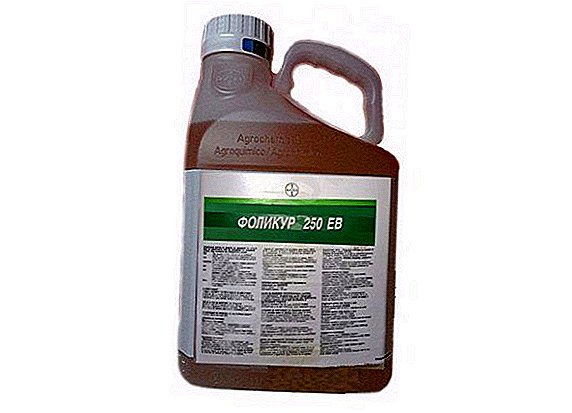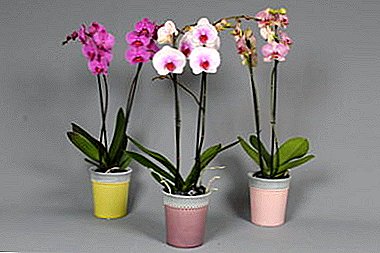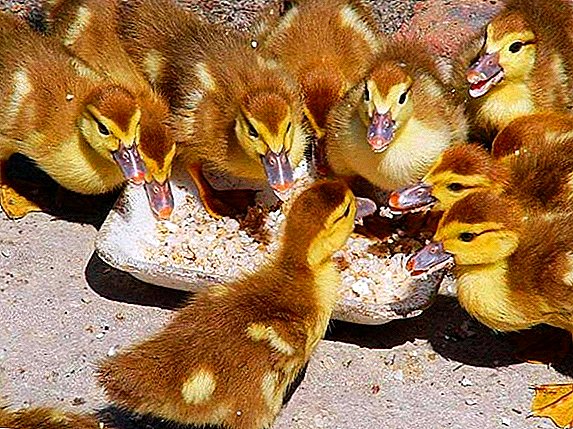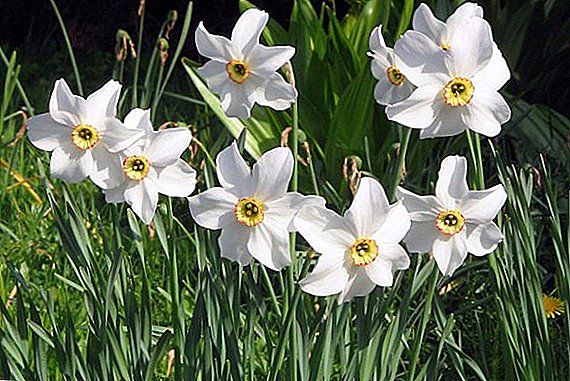 Daffodils are very popular flowers in the gardening of our country (and not only ours). Because of its unpretentiousness to soil and climatic conditions, these flowers are called plants for the lazy. They can simply be planted, sometimes watered, and they will delight the host with a pleasant honey aroma every spring. In this article we will talk about how to plant daffodils before winter, how to make the correct planting in the open field, to choose the right place for planting, and how to carry out proper care for an adult plant.
Daffodils are very popular flowers in the gardening of our country (and not only ours). Because of its unpretentiousness to soil and climatic conditions, these flowers are called plants for the lazy. They can simply be planted, sometimes watered, and they will delight the host with a pleasant honey aroma every spring. In this article we will talk about how to plant daffodils before winter, how to make the correct planting in the open field, to choose the right place for planting, and how to carry out proper care for an adult plant.
When to plant?
Terms of planting this type of flowers in the fall may vary for different regions of our country. Experts recommend planting daffodils at a time when the average daily temperature in the soil is about + 8-10 ° C and lasts 10-14 days in this mode. In the northern and central regions of Russia, this period begins in mid-late September, but in the southern regions it can last until the end of October or the beginning of November. The whole point is that these dates must be respected, otherwise the spring daffodils may not bloom at all.
Learn more about other popular onion flowers: gladioli, lilies, tulips, snowdrops, crocuses, dahlias, crocosmia.
 If you plant the flower bulbs too soon, they can quickly grow and freeze due to autumn and winter frosts. Onion planted in time should have time to take root before the onset of the first frost, but the aboveground part of the flower should not begin to grow until the first frost.
If you plant the flower bulbs too soon, they can quickly grow and freeze due to autumn and winter frosts. Onion planted in time should have time to take root before the onset of the first frost, but the aboveground part of the flower should not begin to grow until the first frost.
In addition, if you plant daffodils, when the soil temperature is higher than indicated, and the humidity exceeds the norm by 1.5-2 times, the root formations of the flower may die. Late planting will lead to the fact that in the spring the daffodils will produce small flowers and low flower stalks. But if you are still late with the landing time, then carefully cover the planted bulbs so that they do not freeze during the first winter frosts.
Did you know? In ancient Rome, daffodils with yellow flowers greeted the warriors who won the war.
 Some varieties of these flowers can easily survive strong frosts without shelter. But if possible for the winter you need to insulate all varieties of daffodils. As a shelter, you can use fir twig, compost, peat, dry leaves, sawdust, etc. It is not recommended to cover the flowers with plastic wrap and its derivatives, since you will limit the access of air to the plant. If desired, the bulbs can be covered with non-woven material for shelter.
Some varieties of these flowers can easily survive strong frosts without shelter. But if possible for the winter you need to insulate all varieties of daffodils. As a shelter, you can use fir twig, compost, peat, dry leaves, sawdust, etc. It is not recommended to cover the flowers with plastic wrap and its derivatives, since you will limit the access of air to the plant. If desired, the bulbs can be covered with non-woven material for shelter.Landing features
For planting daffodils in the fall, you need to follow a certain technology: plant the bulbs in a prepared soil, dig holes of a certain size and fertilize the flower with special substances. We will tell about all this below.
Choosing a place
Choosing the right landing site is an important factor. Daffodils (especially varieties with orange and pink crowns) like semi-shady places, in such conditions the flowers will fade less from the rays of the sun. In addition, for planting bulbs you need to choose a level, protected from drafts places.  Gardeners note that in places where constant gusting winds do not blow, daffodils bloom a little longer. These flowers will feel well among several deciduous trees, but planting them in a garden with lots of green plants and shrubs is not recommended. Moreover, in the shade daffodils will not be able to grow normally, as a result of which their scent will become less saturated, and the flowers themselves will decrease in size.
Gardeners note that in places where constant gusting winds do not blow, daffodils bloom a little longer. These flowers will feel well among several deciduous trees, but planting them in a garden with lots of green plants and shrubs is not recommended. Moreover, in the shade daffodils will not be able to grow normally, as a result of which their scent will become less saturated, and the flowers themselves will decrease in size.
Another important factor when choosing a place is the groundwater level. Choose a place where the groundwater level is no higher than 60 cm. Plots that are constantly flooded when the snow melts or during heavy and prolonged rains are not suitable for planting bulbs. In such conditions, the root system of daffodils very soon rot because of the presence in the soil of a fungus that loves high humidity. 
Soil for daffodils
The most suitable type of soil for planting daffodils is loamy soil type. Its acidity should vary within 6-7.5 Ph. Sandy soil will become unsuitable for normal growth and flowering plants. At first, the daffodils will give large flowers with a pleasant aroma due to the previously accumulated macro-and microelements.
In the future, the plant may stop blooming altogether, the bulb will shrink in size, and in some cases this type of soil may even lead to the death of the flower. But if the soil in your garden is adapted to the normal growth of various flowers, then problems should not arise.  Before planting, the place must be removed: take out all small and large stones, debris, roots of bushes and trees, etc. If you have heavy clay soil on your plot, then you need to add a little sand (20 kg / m²). If the soil is purely sandy, then clay with peat or humus is added to it in the same proportions.
Before planting, the place must be removed: take out all small and large stones, debris, roots of bushes and trees, etc. If you have heavy clay soil on your plot, then you need to add a little sand (20 kg / m²). If the soil is purely sandy, then clay with peat or humus is added to it in the same proportions.
It is necessary to bring in any type of fertilizer 2-3 months before the direct planting of the bulb, and fresh manure needs to be applied at all one year before planting. It is best to fertilize the planting site in the early to mid-summer (depending on which climate zone you live in and when you plant). Subverted manure or humus is applied at a rate of 15–20 kg per square meter. 
Important! Bringing fresh manure directly before planting is strictly prohibited. It contains some substances that can burn young bulbs.Daffodils, like many other types of flowers, need fertilizing with mineral fertilizers. In the first year, their plant will not be used, since it has already accumulated the necessary amount of these substances. If you are going to plant the bulbs of narcissus in the fall, then you can fertilize the soil around them with macro- and microelements after 4-6 months, when the plant gives the first flowers. After the flowering stage, the bulbs will need to be replenished with minerals.
If possible, do a soil analysis in a specialized laboratory. Otherwise, you simply will not know what minerals and how much your flowers need. The main indicators in the analysis is the presence of potassium, nitrogen and phosphorus in the soil (substances without which narcissuses cannot produce large and fragrant flowers). The most important elements that daffodils especially need are phosphorus and potassium.  The first is responsible for the normal development of the bulb and flowering processes (size and aroma of the flower). Potassium helps the flower to synthesize a normal amount of starch and sucrose. You must be careful with nitrogen: in normal dosages, it promotes the development of plant tissues, as a result of which the flower becomes large in size, but if you add too much nitrogen, it can destroy the plant.
The first is responsible for the normal development of the bulb and flowering processes (size and aroma of the flower). Potassium helps the flower to synthesize a normal amount of starch and sucrose. You must be careful with nitrogen: in normal dosages, it promotes the development of plant tissues, as a result of which the flower becomes large in size, but if you add too much nitrogen, it can destroy the plant.
Soil analysis will give clear facts about the presence of one or another element in the soil, and the data obtained can be repelled when applying fertilizer. Norms can be considered: potassium sulfate (30 mg / m²), superphosphate (60 mg / m²), ammonium nitrate, which is applied during planting (10-15 g / m²). If you find an excess of certain substances in your soil, then the rate of a certain fertilizer should be lowered, if there is a lack or absence of it, then the rate should be doubled or tripled. In any case, ask the advice of a technician who will do your soil analysis.  If you do not have the opportunity to analyze the soil, you can do the following trick: remove 30-40 cm of topsoil and replace it with the purchased mixture, in which all mineral substances are already present in optimal quantities.
If you do not have the opportunity to analyze the soil, you can do the following trick: remove 30-40 cm of topsoil and replace it with the purchased mixture, in which all mineral substances are already present in optimal quantities.
The technology of planting daffodils in the fall
Before planting the bulbs of daffodils need to be cleaned from the old skin (remove only the top layer, but do not clean everything up to white scales). The bulbs can be single and group, you only need to separate those that are not tightly pressed to each other. Small group bulbs are best planted together, so you increase the chance of survival of the flower in winter. After all, if you separate them, you will break the integrity and break the white storage scales, without which the flower will soon die.
Did you know? Images of flowering daffodils can be found on the walls of ancient Pompeii.When planting, you must follow this rule: the depth of the fossa should be three times the height of the bulb. For large bulbs, pits should be pushed 15-25 cm deep, for small and grouped bulbs, pits should be dug a little wider, but smaller (about 10-15 cm deep). Gardeners often use the same trick, which allows you to regulate the flowering and reproduction of the bulbs.
 If a flower is planted a little deeper than the indicated norms, then it will bloom with a delay and will multiply more slowly. If you make a surface planting (depth of holes 7-12 cm), then the bulbs will quickly multiply and bloom early. The second way of planting daffodils is best carried out in the southern regions of our country, where there is no strong winter frost. If you live in more northern regions, but want to see the early flowering of daffodils, then you need to take care of the quality insulation of bulbs for the winter.
If a flower is planted a little deeper than the indicated norms, then it will bloom with a delay and will multiply more slowly. If you make a surface planting (depth of holes 7-12 cm), then the bulbs will quickly multiply and bloom early. The second way of planting daffodils is best carried out in the southern regions of our country, where there is no strong winter frost. If you live in more northern regions, but want to see the early flowering of daffodils, then you need to take care of the quality insulation of bulbs for the winter.Before planting, you need to decide on what purpose you are going to grow daffodils. If you need the fragrance of narcissus flowers every spring and no more, then you can plant large bulbs in the middle pits, do it in the fall (September-October).  If your goal is the cultivation of flowers for the purpose of further sale of the bulbs, then select a quality material, but the bulbs should be small and grouped, since in this case the reproduction process will occur much faster.
If your goal is the cultivation of flowers for the purpose of further sale of the bulbs, then select a quality material, but the bulbs should be small and grouped, since in this case the reproduction process will occur much faster.
When planting, place the bulbs downwards. If you put them on the contrary, they still germinate, but the flower stalks will be crooked. Moreover, the plant will consume a lot of energy to break out of the soil, and as a result the flowers will be smaller in size, and their number will decrease by 1.5-2 times. When planting, it is necessary to observe a certain distance between the bulbs: between a large material - 15-20 cm, between a small group - 7-11 cm.  A distinctive feature of daffodils is that their bulbs and leaves contain toxic substances, so small pests (mice, slugs, etc.) do not harm these plants. Gardeners often plant daffodils near tulips, lilies, grouse and other flowers as a protective barrier against pests.
A distinctive feature of daffodils is that their bulbs and leaves contain toxic substances, so small pests (mice, slugs, etc.) do not harm these plants. Gardeners often plant daffodils near tulips, lilies, grouse and other flowers as a protective barrier against pests.
Flower care after planting
It is no longer necessary to apply any type of fertilizer in the fall after planting. You should have done this before planting, and all mineral and organic substances will last a minimum until April-May. It is more important to monitor the soil moisture, which directly affects the rooting of the bulb. On dry autumn days, daffodils should be watered regularly, but only until the air temperature drops below + 5-7 ° C.  If autumn is wet, with a lot of precipitation, then the flowers should be covered with a film in order to prevent over-wetting of the soil, which will lead to the death of the bulb. In addition, do not forget to regularly loosen the soil around the plants in order to remove the crust that prevents the entry of air and water.
If autumn is wet, with a lot of precipitation, then the flowers should be covered with a film in order to prevent over-wetting of the soil, which will lead to the death of the bulb. In addition, do not forget to regularly loosen the soil around the plants in order to remove the crust that prevents the entry of air and water.
Important! Daffodils can grow in one place for no more than 5 years. After that, their bulbs need to be divided and transplanted.Daffodils that are planted in the northern regions of our country require shelter for the winter. This is best done through mulching. But before that, the earth needs to be loosened and watered a little. The layer of mulch should be about 10-15 cm thick. Straw, leaves, peat, sawdust, etc. are excellent as mulch. If in your region there are severe frosts and dry snow-free winters, then it is better to cover daffodils with lutrasil or spunbond.
 And finally, I would like to note that daffodils are one of the most unpretentious types of plants that, among other things, like many gardeners. Their beautiful and fragrant flowers adorn the gardens of many people. Plant daffodils and you, observe the correct technology of planting, fertilize the soil and enjoy the flowering every spring.
And finally, I would like to note that daffodils are one of the most unpretentious types of plants that, among other things, like many gardeners. Their beautiful and fragrant flowers adorn the gardens of many people. Plant daffodils and you, observe the correct technology of planting, fertilize the soil and enjoy the flowering every spring.

